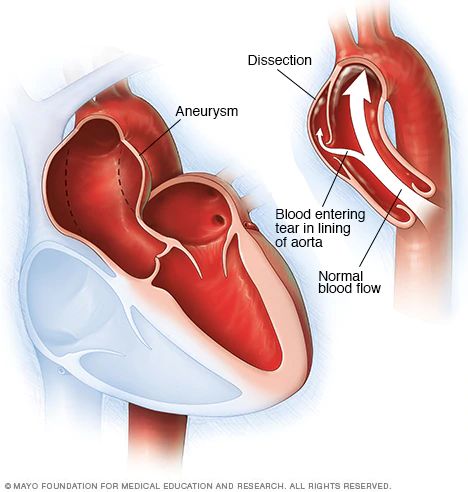
Introduction to Aortic Valve Replacement
Overview of Aortic Valve Function
The aortic valve plays a crucial role in the functioning of the heart. It is responsible for allowing blood to flow from the heart’s left ventricle to the aorta, which then distributes oxygen-rich blood throughout the body. This valve ensures that blood moves in one direction, preventing any backward flow. A healthy aortic valve opens fully to allow blood to be pumped out of the heart efficiently and closes completely to prevent backflow.
Common Causes of Aortic Valve Disease
Aortic valve disease can be caused by various factors, including age-related wear and tear, congenital heart defects, rheumatic fever, and infection. Some of the common conditions that affect the aortic valve include aortic stenosis (narrowing of the valve opening) and aortic regurgitation (leaky valve that allows blood to flow back into the heart). These conditions can lead to symptoms such as chest pain, fatigue, shortness of breath, and fainting spells. Early detection and appropriate treatment are essential in managing aortic valve diseases.
Signs and Symptoms of Aortic Valve Disease
Understanding Aortic Stenosis Symptoms
Individuals with aortic stenosis may experience symptoms such as chest pain or tightness, shortness of breath, fatigue, dizziness, or heart palpitations. These signs can indicate the narrowing of the aortic valve opening, leading to reduced blood flow from the heart to the body. If left untreated, severe aortic stenosis can result in heart failure or other complications.
Recognizing Aortic Regurgitation Symptoms
Aortic regurgitation, characterized by a leaky aortic valve, may manifest through symptoms like palpitations, shortness of breath, fatigue, chest pain, or a feeling of pulsations in the neck. This condition causes blood to flow back into the heart, decreasing its efficiency in circulating oxygen-rich blood throughout the body. Timely diagnosis and management of aortic regurgitation are crucial to prevent further complications and maintain heart health.
Diagnosis of Aortic Valve Disease
Echocardiography and other imaging tests
When diagnosing aortic valve disease, healthcare providers often rely on echocardiography and other imaging tests. Echocardiography, an ultrasound of the heart, helps assess the structure and function of the heart valves, including the aortic valve. Other imaging tests such as MRI or CT scans may also be used to provide a clearer picture of the heart’s condition. These tests enable healthcare professionals to accurately diagnose the type and severity of aortic valve disease, guiding them in determining the most appropriate treatment plan for the patient.
Importance of Cardiac Catheterization
Cardiac catheterization is another crucial diagnostic tool used in aortic valve disease. This procedure involves inserting a thin tube (catheter) into a blood vessel and guiding it to the heart to evaluate its function and blood flow. Cardiac catheterization can help determine the pressure and oxygen levels within the heart chambers, providing valuable insights into the extent of the valve disease and any associated complications. By conducting a cardiac catheterization, healthcare providers can make informed decisions regarding the management and treatment of aortic valve disease, ensuring optimal care for the patient.
Treatment Options for Aortic Valve Disease
Surgical Aortic Valve Replacement (SAVR)
For patients with severe aortic valve disease, Surgical Aortic Valve Replacement (SAVR) is a common treatment option. During SAVR, the damaged aortic valve is removed and replaced with a prosthetic valve through open-heart surgery. This procedure is highly effective in improving symptoms, enhancing heart function, and increasing overall quality of life for patients with aortic valve disease.
Transcatheter Aortic Valve Replacement (TAVR)
Transcatheter Aortic Valve Replacement (TAVR) is a less invasive alternative to SAVR for patients who are at higher risk for traditional surgery. TAVR involves threading a catheter through a blood vessel to the heart, where a new valve is implanted within the diseased valve. This procedure reduces recovery time and is suitable for patients who may not be candidates for open-heart surgery. TAVR has shown excellent outcomes in improving symptoms and prolonging life expectancy in patients with aortic valve disease.In summary, both SAVR and TAVR are effective treatment options for aortic valve disease, each with its benefits depending on the patient’s condition and overall health. Consulting with a healthcare provider is crucial in determining the most suitable treatment approach for individual cases.
Also Read: Understanding the Role of the Aortic Valve in Heart Health
Preparing for Aortic Valve Replacement Surgery
Medical evaluations and tests required | Lifestyle modifications before the procedure
Patients undergoing aortic valve replacement surgery must undergo several medical evaluations and tests to ensure they are fit for the procedure. These may include blood tests, imaging scans, and an electrocardiogram to assess heart function and overall health. The results of these tests help the medical team determine the best surgical approach and reduce risks during the operation.In preparation for aortic valve replacement surgery, lifestyle modifications are often recommended to optimize outcomes. Quitting smoking, maintaining a healthy diet, engaging in regular exercise, and managing stress can all contribute to better surgical results and overall recovery. Following these lifestyle changes can also improve long-term heart health and reduce the risk of complications post-surgery.It is essential for patients to follow their healthcare provider’s guidance closely and attend all pre-operative appointments to ensure a successful aortic valve replacement surgery. By proactively preparing both medically and in lifestyle adjustments, patients can enhance the success of the procedure and promote better post-operative outcomes.
